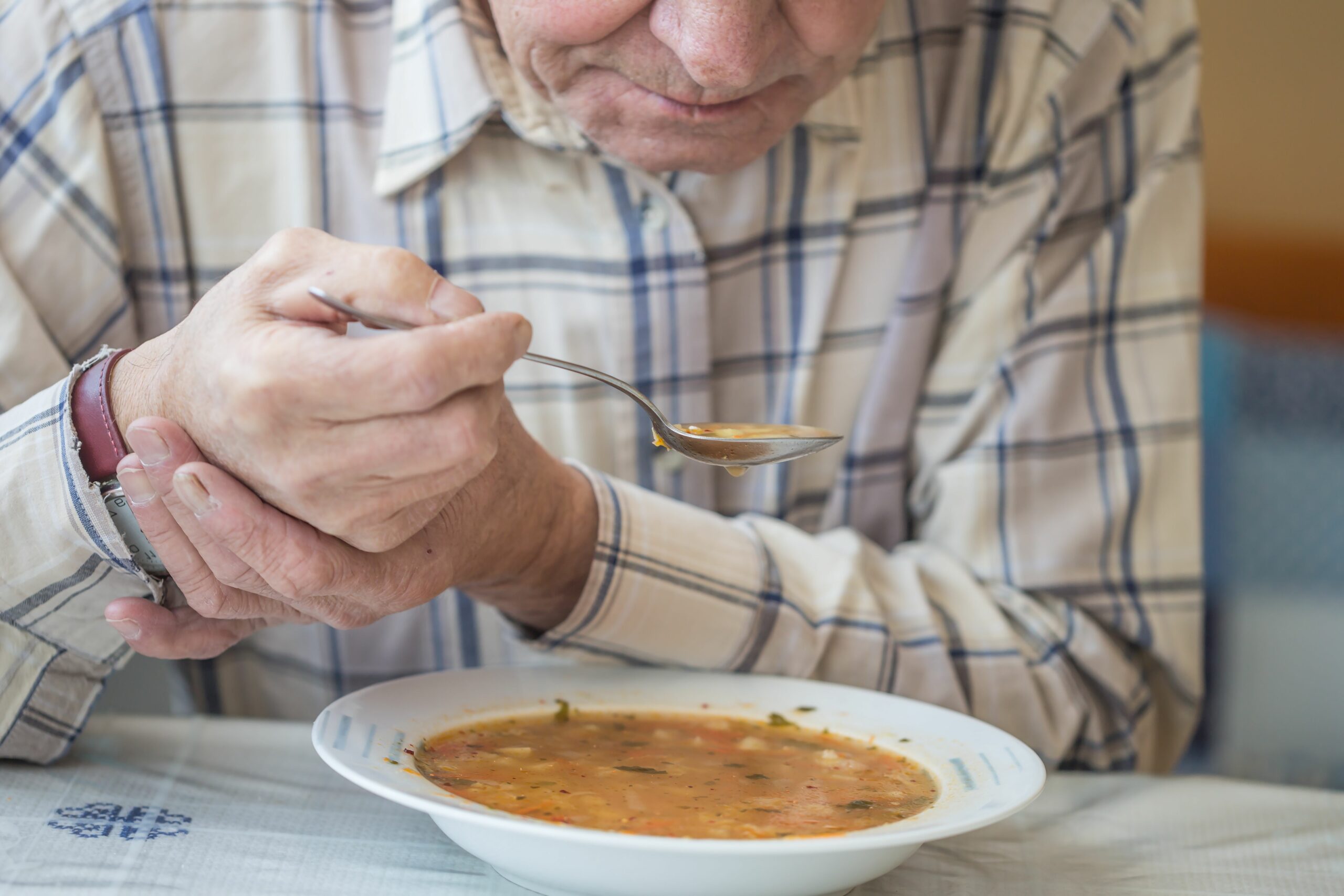How Does Dysphagia Affect Eating?

When caring for a person with dysphagia, it’s important they receive adequate nutrition. In this blog, we’ll be listing what you should and shouldn’t serve to a person with dysphagia.
Why does dysphagia affect eating?
Many people with dysphagia struggle to swallow or cannot swallow at all. Signs of dysphagia include coughing or choking when eating, bringing food back up and unexplained weight loss. [1] If you think you or someone you care for may have dysphagia, see our full list of symptoms at liquidmedicine.co.uk.
How do you eat with dysphagia?
Many cases of dysphagia can be improved with treatment, but a cure isn’t always possible. To make eating and drinking easier, you can change the consistency of foods, such as pureeing, to make them safer to swallow[1]. Another technique is to choose foods that are already soft in consistency, allowing for a soft food diet [2].
What foods should you avoid with dysphagia?
You should avoid giving a person with dysphagia any hard or dry foods. Some of these include [3]:
- Bread
- Cereal with lumps
- Cakes and pastries
- Seeds or nuts
- Fresh fruit and vegetables
- Fried or hard-boiled eggs
- Whole meat
What kind of food is good for dysphagia?
Moist and soft foods can be much easier to swallow. Some of the best foods to eat include[2]:
- Mashed potatoes
- Porridge
- Pancakes with syrup
- Minced or finely diced meat, served with gravy
- Tofu
- Soft, cooked vegetables diced to around 1cm
- Ripe bananas
- Pudding with custard
- Jelly
Additionally, the International Dysphagia Diet Standardisation Initiative has provided a common terminology to describe food textures and drink thickness. They recommend that each patient should be tested by a healthcare professional and then advised the food and drink that is suitable to them, personally. Their framework is as follows[4]:
- Level 0 (Drinks)- Thin
- Level 1 (Drinks) – Slightly thick
- Level 2 (Drinks) – Mildly thick
- Level 3 (Drinks) – Moderately thick
- Level 4 (Drinks) – Extremely thick
- Level 3 (Food) – Liquidised
- Level 4 (Food) – Pureed
- Level 5 (Food) – Minced and moist
- Level 6 (Food) – Soft and bite sized
- Level 7 (Food) – Regular and easy to chew
For more information on the framework, visit the IDDSI website: IDDSI Framework
Does dysphagia affect drinking?
Thicker liquids that flow slowly can often be easier to swallow[5]. It is crucial to also ensure that a person with dysphagia is sitting upright whilst they take a drink or eat[3].
Managing dysphagia and food
It is very important to ensure that the person with dysphagia enjoys the food that you make for them. In some cases, pureeing food can alter the taste and therefore the enjoyment of eating. Ensure that you or the person that you care for has a balanced diet, whilst also serving delicious food and drink options. For more information about swallowing difficulties and dysphagia visit www.liquidmedicine.co.uk.
Liquidmedicine.co.uk is provided as a service to medicine by Rosemont Pharmaceuticals Ltd.
ROS000023-010 Date of Preparation May 2023
- NHS Inform, ‘Dysphagia (swallowing problems)’, 13/02/2023, https://www.nhsinform.scot/illnesses-and-conditions/stomach-liver-and-gastrointestinal-tract/dysphagia-swallowing-problems. Accessed March 2023.
- UMMC Health Care – Ear, Nose and Throat (ENT), ‘Dysphagia Mechanical Soft Diet’, https://www.umc.edu/Healthcare/ENT/Patient-Handouts/Adult/Speech-Language-Pathology/Swallowing/Dysphagia-Soft-Diet.html. Accessed April 2023.
- Saint Luke’s, ‘What is a level 1 dysphagia diet?’, https://www.saintlukeskc.org/health-library/dysphagia-diet-level-1. Accessed April 2023
- International Dysphagia Diet Standardisation Initiative, ‘The IDDSI Framework’, https://iddsi.org/framework. Accessed April 2023.
- Saint Luke’s, ‘Dysphagia Diet: Managing Drinks’, https://www.saintlukeskc.org/health-library/dysphagia-diet-managing-drinks. Accessed April 2023.







